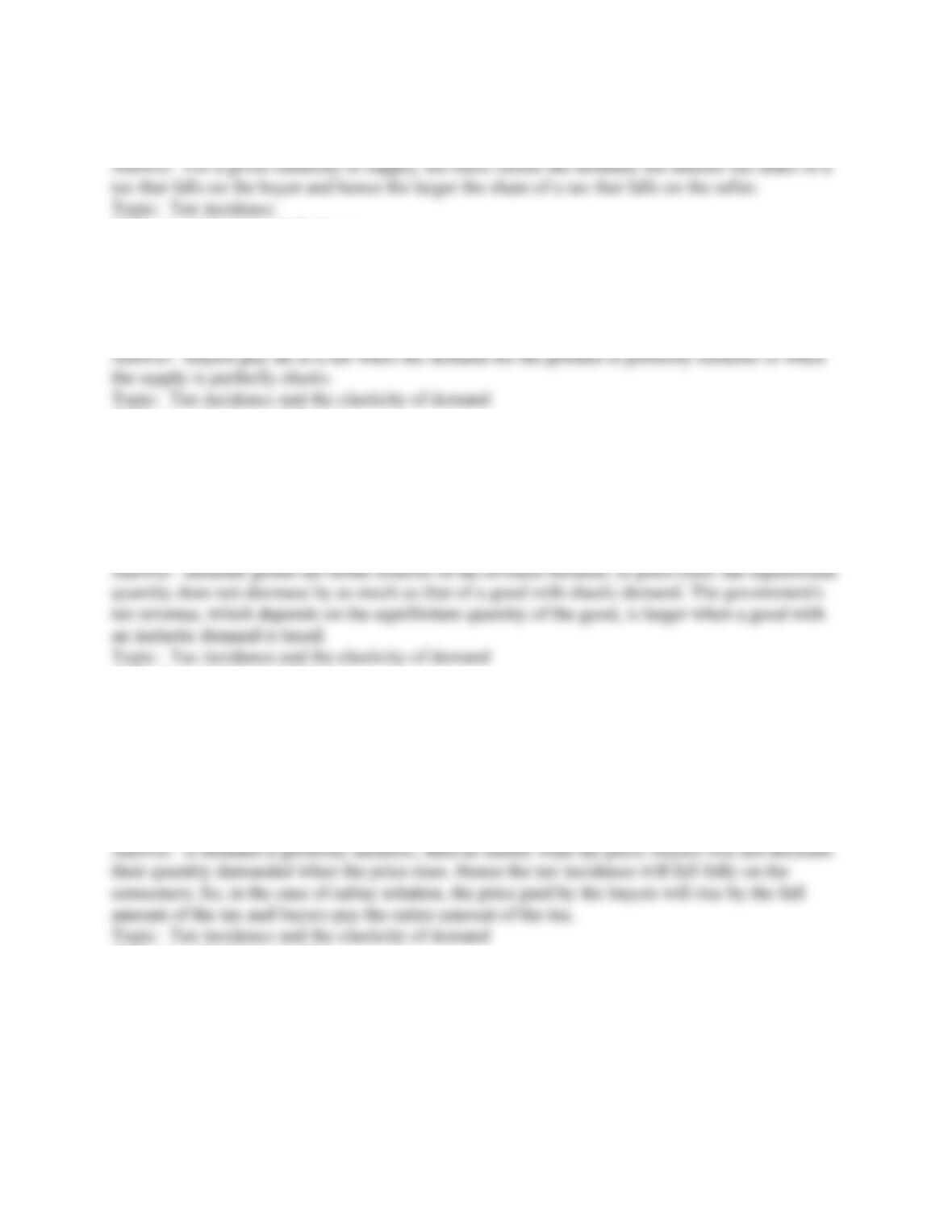
92
Copyright © 2011 Pearson Education, Inc.
12) To levy a tax based on the benefits principle to pay for a bridge, the government
A) would impose an income tax instead of a social security tax on workers.
B) would impose a social security tax on workers instead of an income tax.
C) needs to know each person's benefit from the bridge.
D) needs to be able to calculate the deadweight loss of a tax.
E) cannot impose the tax on anyone who uses the bridge.
Skill: Level 3: Using models
Section: Integrative
Author: CD
AACSB: Reflective thinking
13) Which of the following taxes guarantees vertical equity?
i) income tax
ii) social security tax on workers
iii) social security tax on employers
A) i only
B) i and ii
C) ii and iii
D) iii only
E) None of the above taxes guarantees vertical equity.
Skill: Level 3: Using models
Section: Integrative
Author: CD
AACSB: Reflective thinking
8.6 Essay: Taxes on Buyers and Sellers
1) When a tax is imposed on a good, the resulting rise in the equilibrium price is usually less than
the amount of the tax itself. Why doesn't the equilibrium price rise by the full amount of the tax?
Skill: Level 3: Using models
Section: Checkpoint 8.1
Author: SB
AACSB: Communication









